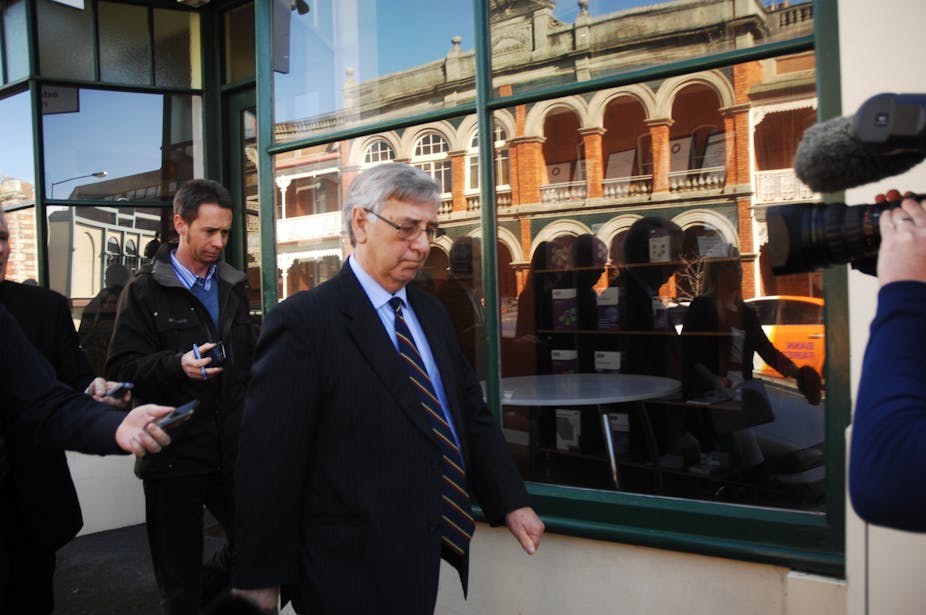The Australian Securities and Investments Commission is moving to “real-time” monitoring of share trading as another weapon in the ongoing fight against insider trading.
But will the use of this form of surveillance technology actually lead to an increase in the number of insider trading cases which are successfully mounted?
This month ASIC will reportedly adopt the long awaited FAST (Flexible Advanced Surveillance Technologies) market surveillance system, enabling it to engage in real-time monitoring of physical and future securities markets.
It’s hoped this technology will make it easier for ASIC to identify unusual or suspicious trading patterns in order to better identify insider trading.
But detecting likely insider trading is only the first step in the long journey to a successful prosecution, and ASIC’s track record in this area is also in the spotlight as a result of the current Senate inquiry into its performance.
No smoking gun
Insider trading has a reputation as a notoriously difficult offence to successfully prosecute and is viewed by many as being both under-detected and under-prosecuted. Some even believe it is unavoidable and endemic to securities markets.
In Australia, insider trading is prohibited because it is a threat to the integrity of our securities markets. In addition to the unfairness which exists in giving “insiders” the opportunity to trade using information which others cannot access, if potential investors believe that “insiders” have a distinct advantage over all other investors, they are likely to lose confidence in the securities market and will be much less likely to participate.
A person commits the offence of insider trading when they trade in company shares (or other financial products) while they possess information which they know, or should know, is price-sensitive and not generally available.
To successfully prosecute a suspected insider trader, a number of elements must be proven:
- That the person had inside information.
- That the person knew (or ought to have known) that the inside information was not generally available.
- That the person knew (or ought to have known) that the inside information was price-sensitive.
- That the person traded in share or other financial products to which the inside information related.
The use of improved market surveillance technologies, enabling the regulator to detect more easily when suspicious trading has occurred, is likely to assist in relation to the fourth element above – proving that there has been trading in relevant shares or other financial products, but it will not necessarily make it any easier to prove the other elements of the offence.
Proving the state of mind of a suspected insider trader – that is, proving that the person knew or ought to have known that inside information was not generally available and was price-sensitive – is generally recognised as one of the major difficulties faced in insider trading prosecutions. Indeed, Alan Cameron, former Chair of ASIC, has even noted that “proving that a person had knowledge is often harder than it sounds unless there is smoking-gun type of evidence”.
There may be many reasons for a person to engage in securities trading – the mere existence of the trading itself is not indicative or conclusive of insider trading without additional strong evidence to support such a claim and prove the other elements of the criminal offence beyond a reasonable doubt.
Helping ASIC
In the past, ASIC has been criticised over its conduct of insider trading cases, but more recently it has had an improved track record in the pursuit of insider traders.
Twenty-nine individuals have reportedly been prosecuted for insider trading since January 2009 – of whom 20 have been convicted, six have been found to be either “not guilty” or with a conviction quashed after a “guilty” verdict, with three sets of contested proceedings awaiting trial, and one matter discontinued. ASIC has also recently confirmed that insider trading will remain a significant focus of future investigations.
ASIC has a number of powers which can also be used to assist in the detection and investigation of insider trading – gaining access to telephone records and stored communications, the use of search warrants and compulsory information gathering powers.
Anecdotal evidence also suggests ASIC may rely to a certain degree on “tip-offs” from whistle-blowers and other informal sources.
Interestingly, in ASIC’s own submission to the Senate inquiry into its performance, lodged late last week, ASIC suggested it would be much better placed to carry out its many functions if granted greater investigative powers. If it succeeds the new real-time surveillance tool will be one new weapon in its armoury.

